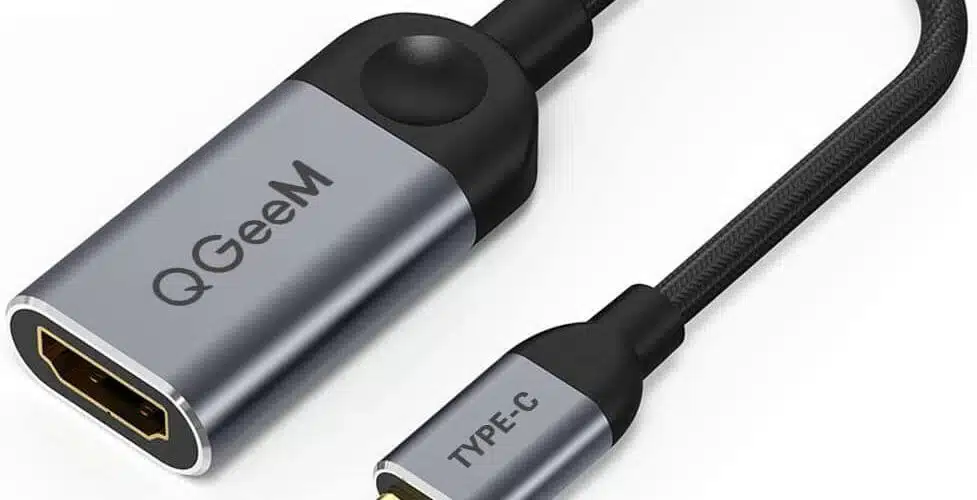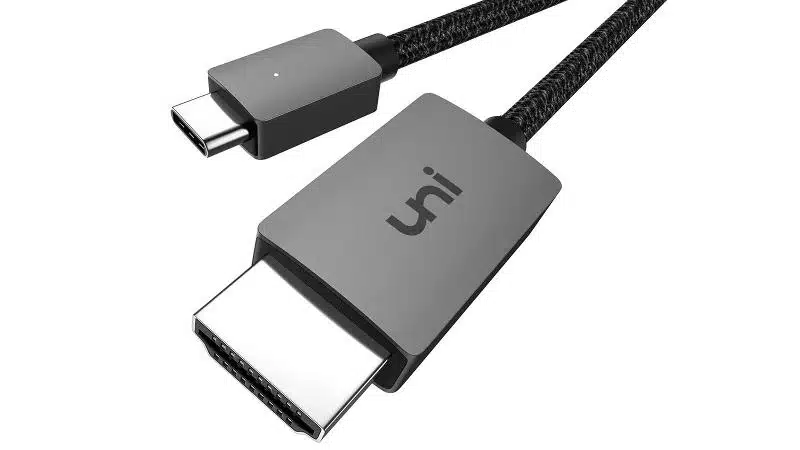Table of Contents
How To Connect Phone To TV With HDMI Adapter?
How To Connect Phone To TV With HDMI Adapter? Connecting a phone to a TV is an effective way to showcase photos, play mobile games on a bigger screen, or watch a video. This connection method requires a USB-C to HDMI cable or adapter and the correct hardware.
Ensure your TV has an HDMI port to connect the adapter or cable. Then, confirm your phone’s USB-C port supports this type of connection and that the cable supports high data transfer rates.
MHL Technology:
MHL technology is an innovative feature that allows a mobile device to connect directly to a TV via a cable. It is based on the mobile high-definition link specification developed by the Mobile High-Definition Link Consortium (MHL).
This means that many mobile devices can be connected to an HDMI-enabled television without needing a separate cable or adapter. The MHL cable also supplies power to the device, meaning it can be charged while simultaneously providing a video output to the TV. The MHL standard supports a range of different resolutions and audio formats, including HD audio, 7.1 channel Dolby Digital surround sound, and more.
To use MHL simply plug the end of the cable or adapter into your phone or tablet with a Micro USB port and then an HDMI cable into the other end of the cable. The MHL cable or adapter will also need to have a power source attached (either from a separate cable or your device’s battery).
Once you have everything connected turn on the TV and then select the MHL input using your remote control. This will automatically switch to the MHL connection and allow you to play videos and take advantage of apps that can be used with a TV. Some MHL-compatible phones can even allow you to use the touchscreen on your phone while connected so you can still navigate and control your media.
Screen Mirroring:
The screen mirroring function allows you to display the content of a compatible mobile device’s screen on your TV. It uses Miracast technology and does not require a WiFi router. It can be used with Android devices and Apple devices that support the feature. If your device does not support the function, refer to the Alternative Methods section for other options.
To use screen mirroring, you will need a TV with HDMI ports and an HDMI cable. You will also need a USB-C to HDMI adapter and cable if your phone has a USB-C port. The specific type of cable and adapter will vary depending on your phone’s model.
On most Android phones, the screen mirroring setting is available in the Quick Settings panel (for example, the Smart View setting on Samsung devices). To open the panel, swipe down from the top of your phone’s display. The panel will display a list of available TVs to which you can connect using screen mirroring. Select the TV to which you want to connect and follow any on-screen instructions to complete the connection.
If you have an iPhone, the process is similar. Open the Control Center and tap the Screen Mirroring button (two interlocking rectangles). Then, choose your TV from the list of available AirPlay 2 devices. Once the connection is established, your iPhone’s screen will automatically appear on your TV.
Casting:
With more than 2.5 billion Android devices in use worldwide, you may need to connect your device to a TV to share photos and videos with family and friends or showcase spreadsheets and presentations at work. Screen mirroring and casting are two of the most effective ways to do so. Using the correct adapters and cables is critical to ensure a seamless connection between your mobile device and your television.
Both HDMI and USB-C offer a variety of connections that support both audio and video output. HDMI is a well-known connector that can transfer data and deliver power, while USB-C is a newer port that supports various standards and protocols. The easiest way to connect a USB-C-enabled mobile device to a TV is to use a cable with a USB-C to HDMI adapter.
Another option is to use a wireless streaming service like Miracast, which works over Wi-Fi. This requires a compatible TV and smartphone that supports the Miracast protocol. Some of the latest mobile phones come with built-in support for this, while other mobile devices require a Miracast dongle to enable this functionality.
Regardless of your connection method, you can enjoy the best experience possible by familiarizing yourself with the different screen mirroring and casting features that expand your phone-to-TV capabilities. Understanding the proper adapter and cable selection for your device type is crucial for a successful connection, as well as understanding the various wireless connections that can enhance your connectivity.
USB-C:
Whether you want to showcase family photos, play mobile games on the big screen or watch your favorite videos and TV shows, connecting your phone to your TV has never been easier. Using a USB-C to HDMI cable or adapter, you can wirelessly transmit your smartphone’s display content to your TV and enjoy an enhanced viewing experience.
Connecting your phone to your TV through a USB-C connection requires only a few basic accessories, including a compatible adapter or cable and a high-quality HDMI cable. This method is ideal for Samsung phones with a USB-C port. It also works well with Android phones that support MHL.
To connect your phone to the TV, first locate its HDMI port and make sure it’s MHL-enabled. If it isn’t, you will need to use a special MHL-compatible cable or adapter. Then, plug the USB-C end of the cable or adapter into your Samsung phone. Connect the HDMI end of the cable or adapter to your TV’s HDMI port. Finally, enable screen mirroring or Smart View on your phone to view the contents of its display on the TV.
Alternatively, you can use a Miracast-enabled Android device to connect your phone to the TV. To do so, you’ll need to have a Miracast-compatible TV or display. You can check if your TV supports Miracast by searching its model number online or by visiting the manufacturer’s website.






Add comment